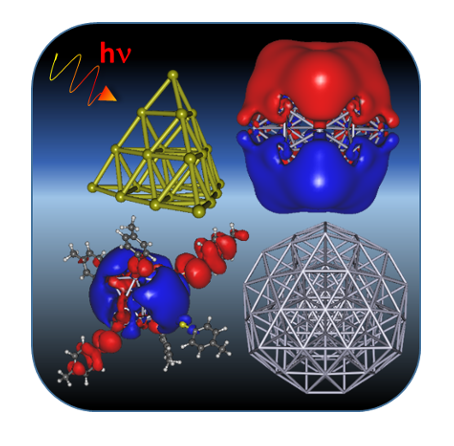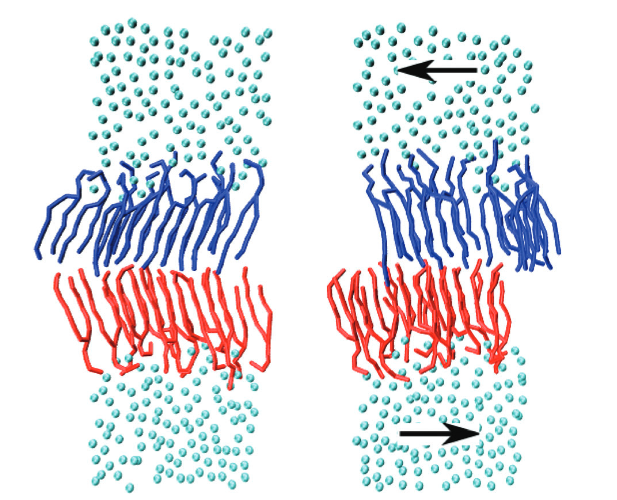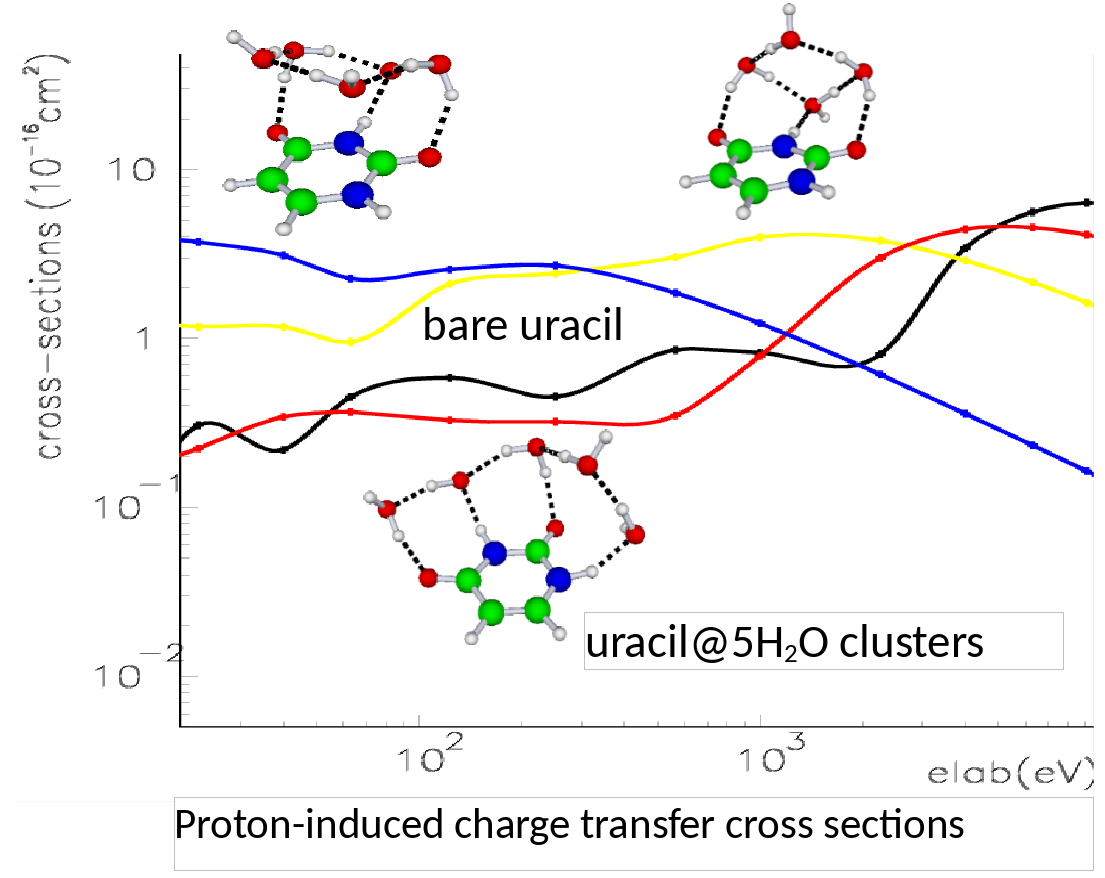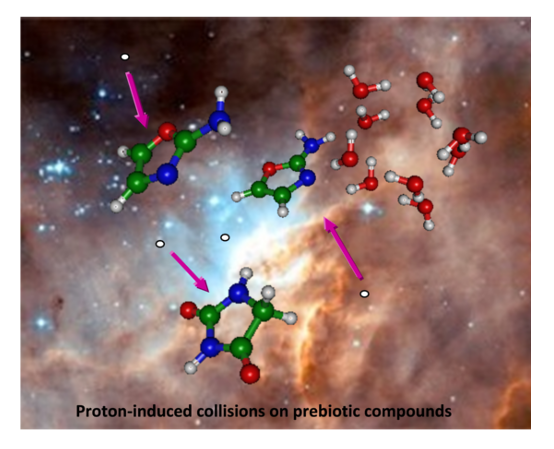Thèmes de Recherche:
Agrégats métalliques

Les propriétés optiques, structurales et électroniques des agrégats métalliques sont étudiées à la fois pour une recherche fondamentale et pour des applications dans divers domaines: plasmonique, opto-électronique, médecine, catalyse, cellules solaires, colorations, etc. Nos travaux, principalement basés sur la (TD-)DFT, concernent les agrégats métalliques libres ou environnés avec prise en compte des ligands, de la surface ou de la matrice en contact avec l’agrégat.
-> link
Lipidic Bilayers under constraint

Lipidic bilayers are ubiquitous in living organisms, in cell membranes but also in extra-cellular fluids. Numerical Simulations at the molecular level permit to study how they behave under mechanical constraints, and whether they can play a role as nanolubricants in joints or eyes.
-> ref1; ref2; ref3
Action des radiations sur le milieu biologique

En relation avec les traitements du cancer, nous analysons l’action des radiations à l’échelle moléculaire sur le milieu biologique. Les ions créés in situ au passage des radiations peuvent induire des dommages importants sur l’ADN, dans des réactions directes, ou lors de processus indirects faisant intervenir l’environnement (ie nanohydratation).
-> ref1; ref2; ref3
Research Topics:
Metal nanoclusters

The interest for the unique optical, structural and electronic properties of metal nanoclusters has recently experienced a fast growing due to both fundamental aspects and potential applications in plasmonics, optoelectronics, medicine, catalysis, solar cells, glass coloring, etc. We perform DFT-based calculations on nanoclusters which can be free, liganded, deposited on a surface or embedded in a matrix. Our simulations take into account the environment.
-> link
Lipidic Bilayers under constraint

Lipidic bilayers are ubiquitous in living organisms, in cell membranes but also in extra-cellular fluids. Numerical Simulations at the molecular level permit to study how they behave under mechanical constraints, and whether they can play a role as nanolubricants in joints or eyes.
-> ref1; ref2; ref3
Radiation effect on the biological medium

Related to cancer therapy treatments, we analyze radiation action on the biological medium at the molecular level. Ion created along the radiation track may indeed induce severe damage to DNA, from direct interaction or in indirect processes involving the medium as nanohydration.
-> ref1; ref2; ref3



















